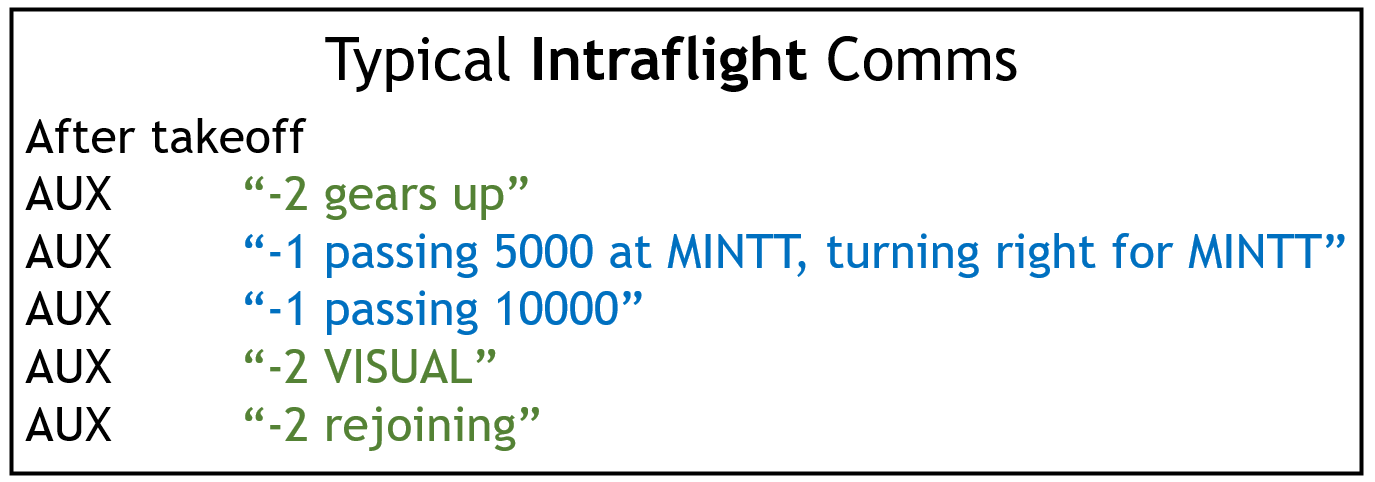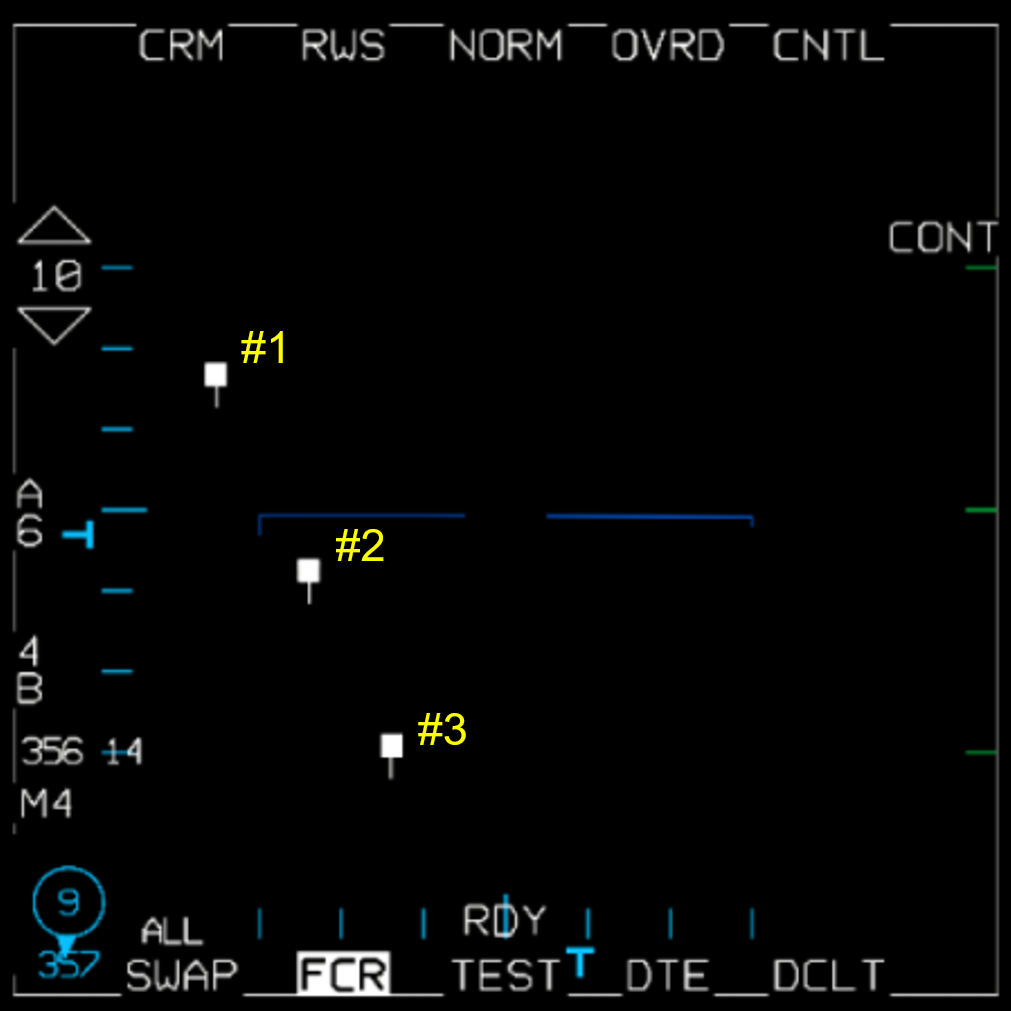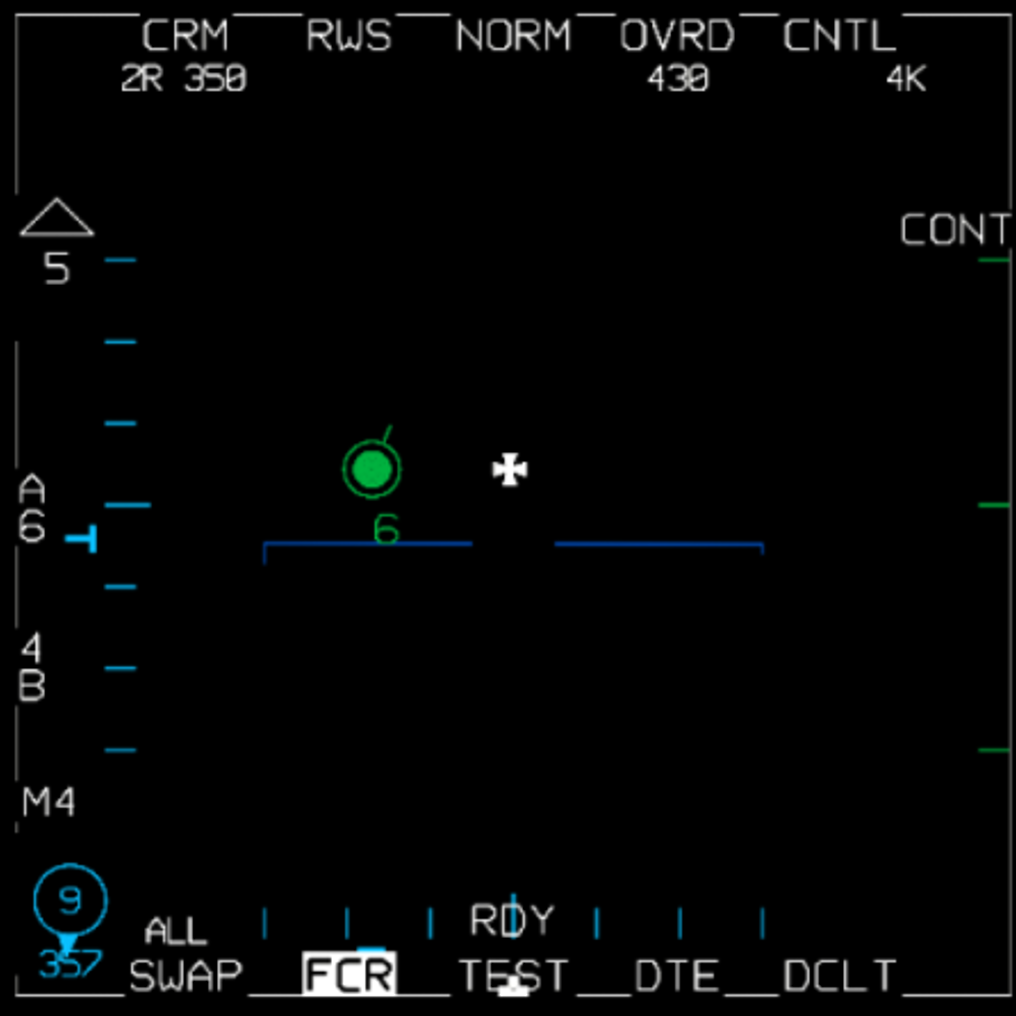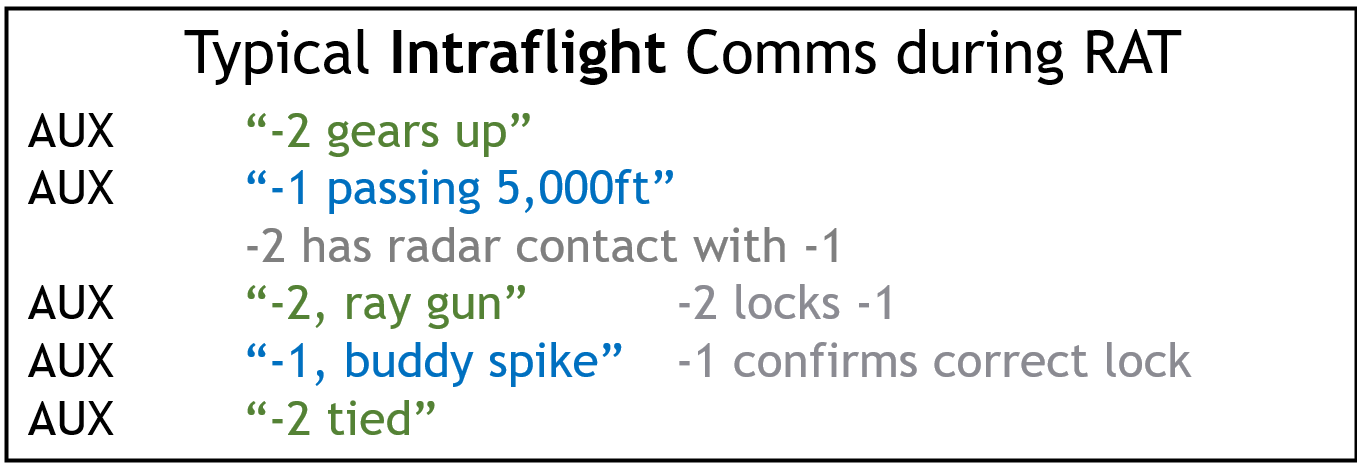Instrument Takeoff
Overall rules & regulations
- Instrument Flight Rules (IFR) takeoff procedures assume visual contact with the runway.
- If abort is required broadcast “ABORT”.
- Check instruments to ensure positive climb.
- Unless departure plates direct otherwise, climb runway heading 2,000ft AGL at 350KCAS at 750°C FTIT before any turns, pitch for airspeed.
- All turns are made with a maximum of 30° of bank.
- Get into the habit of cross checks between HUD and ADI.
Standard Interval Departure
(SID)
- Prior to taking the runway, ensure that instrument approach plates (IAP) for the landing runway are readily available in the event of an emergency.
- Position the standard instrument departure (SID) in an easily observable position.
- After takeoff follow the SID.
- Flight Lead calls passing every 5,000ft MSL increment, and all turns off the briefed departure Call “VISUAL” as soon as visual with lead (normally after weather penetration). Standard VMC rejoin once VISUAL.
Radar Assisted Trail Departure
(RAT)
Standard Radar Setup (SETUP BEFORE TAKE OFF)
- Range while search (RWS) or normal air mode (NAM). Scan: 10NM or 20NM scope, ±60 degrees sweep, elevation slightly above detent.
- Track while scan (TWS) may be used after sorting is complete and the flight is relatively predictable Do not use air combat mode (ACM) during RAT.
Takeoff/Transition to Instruments
- Get aircraft safely airborne, gear retracted, and establish a safe climb at departure speed.
- Do not transition from the basic instrument cross-check until these tasks are completed. During climb maintain briefed power setting (350 KCAS if unbriefed)
Radio Calls
- Lead calls passing every 5,000ft MSL increment, and all turns off the briefed departure until all flight members have been reported “TIED” (-> See Below)
Using the Radar
- After safely taking off, start bringing the radar into the cross-check.
- The preceding flight member should be displayed as histories ~2NM in front of you.
- If not, check search elevation and confirm correct radar setup.
- Do not sacrifice basic instrument execution to accomplish radar work! Flying the aircraft is always the first priority.
- If there are numerous contacts, concentrate on those, which are at range and azimuth with the departure ground track.
Contact Established
- Wingmen lock the preceding flight member up with a single target track (STT), as soon as they have radar contact on the correct flight member.
- Call “RAY GUN” while locking on preceding flight member. If “BUDDY SPIKE” is reported by the correct flight member, call “TIED”.
- Once every flight member calls “TIED”, flight lead does not report the 5,000ft MSL increments.
RAT Radar TIED to preceding flight member:
Further Radar Operation Considerations
-3 and -4 may lock preceding flight members using situational awareness mode (SAM) so all flight members are displayed. It is recommended to go STT first, then switch for confirmation.
-2 can switch from STT to SAM mode after -1 reported spike.
Maintaining Formation
For turns using 30 degrees of bank, allow the preceding aircraft to drift 5 degrees from the center of the multifunction display (MFD) for each mile of separation or delay approximately 20 seconds from the “Turning” call without radar contact. For example, to maintain a 2 NM trail position, allow the preceding aircraft to drift 10 degrees before initiating the turn; to maintain a 3 NM trail position, allow the aircraft to drift 15 degrees before starting the turn (20 seconds delay is a good tradeoff when not tied).
Adjusting Formation
If spacing is greater than desired, initiate the turn prior to the standard lead point to establish cutoff and decrease separation.
Visual Transition
After regaining visual meteorological conditions (VMC) and maintaining visual with the preceding aircraft call “VISUAL”. After all flight members called visual, expect the flight to rejoin in the briefed en route formation. Unlock your tracks.




